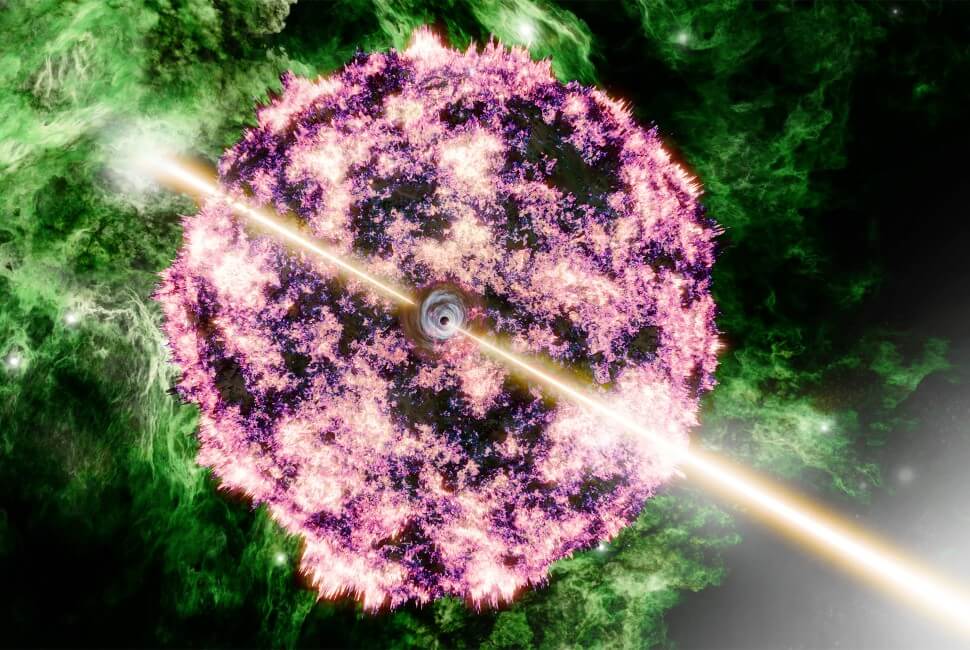Astronomy is full of puzzling things, and an international team of researchers has just added another exciting object: a dense, compact object observed orbiting a pulsar. This in itself is not groundbreaking, but the mass of this object is puzzling. He is in what is called the mass gap. Researchers are observing either the heaviest known neutron star or the lightest black hole.
When stars heavier than the Sun go supernova, they can form two different types of objects. If it is not very large, it will collapse into a neutron star. Neutron stars are stellar objects made of only neutrons (particles at the center of the atom with no electrical charge) and have incredible density. A teaspoon of neutron star matter has a weight similar to the weight of a mountain.
Neutron stars can have different properties. Pulsars are a type of neutron star that spins rapidly around its axis, emitting a periodic pulse. Millisecond pulsars, like the object in this study (called PSR J0514−4002E), rotate hundreds of times per second. It works like some of the most precise clocks in the universe.
Another dense object that a supernova can create is a black hole, an object so dense that nothing, not even light, can escape from it. Observations and theories place the heaviest possible neutron star at 2.2 times the mass of the Sun. The mass of the lightest black hole is expected to be about five times the mass of the Sun. In between, there's the mass gap, where the object would be expected to be a black hole unless we're missing something in the physics of neutron stars.
The mass of the pulsar companion in this case is between 2.09 and 2.71 times the mass of our Sun. It could be a system containing a pulsar and a black hole; Or a neutron star, one of which is a pulsar.
“The prospect as to the nature of the companion is exciting. The pulsating black hole system will be an important target for testing theories of gravity, and the heavy neutron star will provide new insights into nuclear physics at very high densities,” co-author Professor Ben Stubbers, from the University of Manchester, said in the article. statement.
The pulsar rotates (and therefore pulsates) 170 times per second, which has been observed using the Meerkat radio observatory. By studying small variations in this rhythmic signal, the researchers were able to estimate the properties of the system. The accuracy achieved is incredible considering that these two celestial bodies are 40 thousand light years away from us.
“Think of it like being able to drop an almost perfect stopwatch into orbit around a star about 40,000 light-years away, and then being able to time those orbits with microsecond precision,” added Euan Parr of the Max Planck Institute for Radio Astronomy, who led the research team. He studies with his classmate Arunima Dutta.
The team believes that the companion is not a direct result of a supernova, but was originally two neutron stars, which merged into this massive object.
It may seem strange to have three neutron stars in one system, but this object is located in a globular cluster. This is a spherical cluster of stars with a much higher density than other places in the galaxy, such as our neighborhood. It is common for many stars to interact in globular clusters. Such reactions may have led to the formation of an incredible object. Although we don't know exactly what it is yet, researchers are committed to finding out.
“We are not finished with this system yet,” Arunima Datta concluded. “Revealing the true nature of the comrade's will [be] A turning point in our understanding of neutron stars, black holes, and whatever else might be lurking in the black hole's mass gap.
A paper describing this research is published in the journal Sciences.

“Extreme travel lover. Bacon fanatic. Troublemaker. Introvert. Passionate music fanatic.”






More Stories
Ellen DeGeneres speaks out about talk show's 'devastating' ending: Reports
An unprecedented meteorite discovery challenges astrophysical models
'Survivor' host Jeff Probst says Season 50 will be all players returning